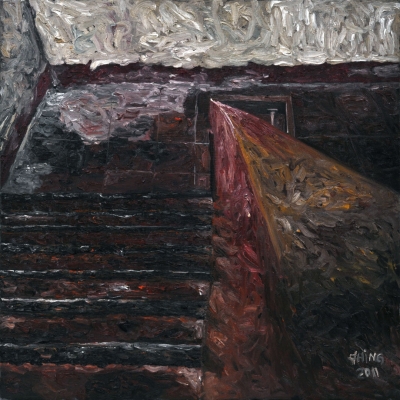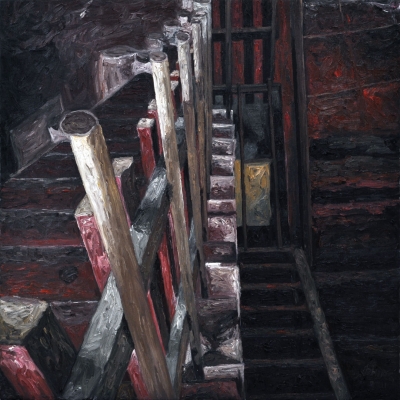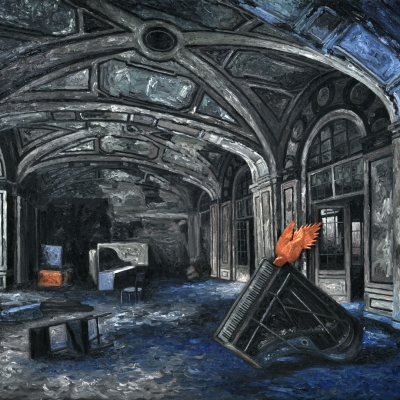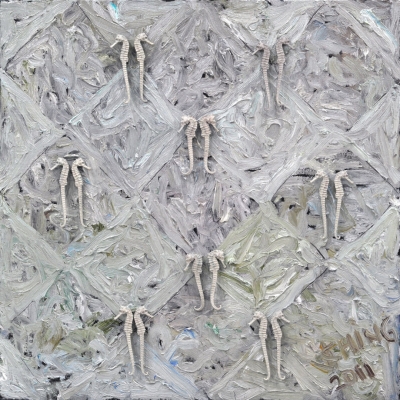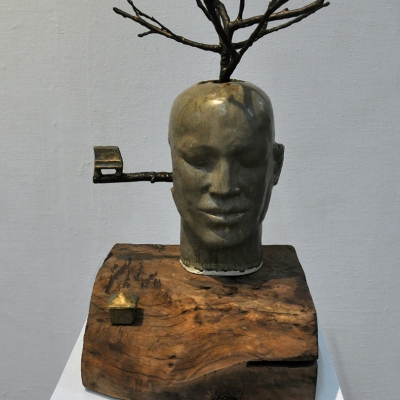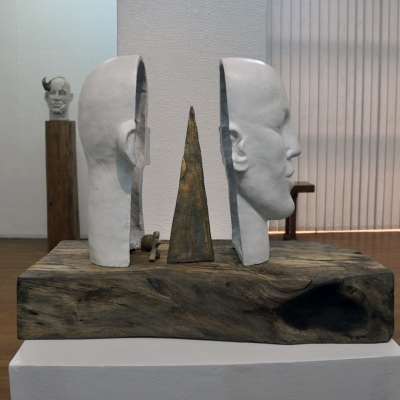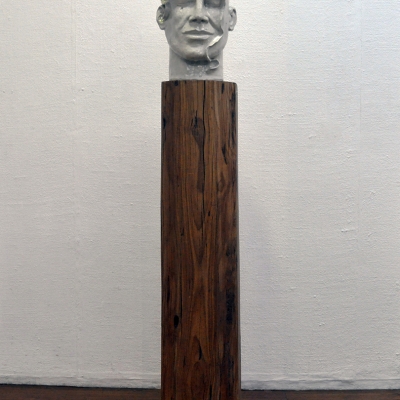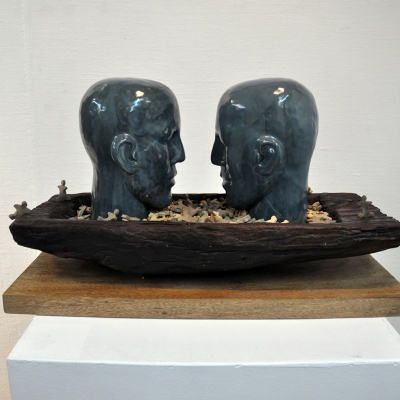A sequel to last year’s Road to Santiago, A Flash and a Clap features the latest collaboration of artists Jonathan Ching and Anna Varona. “I have always known Anna for her experimentation with materials,” says Ching. A Flash and a Clap is a play on lightning and thunder. “The idea came up when I called up Anna and asked her what she is currently up to. She said she has been making sculptural pieces of human heads. Then, I thought I wanted to try to paint sound, as it is ephemeral, until it looped over and over inside one’s head, hence, the idea for the two-person show.”
On the surface, the show will be somewhat similar to last year’s, as Varona focuses on sculptural pieces, while Ching sticks with painting. Adds Ching, “Aesthetically, for me, partnering with an artist who works in another medium lends for a more interesting show as my work is usually wall bound.” Varona, for her part, says she and Ching are on the same frequency, art-wise. She adds that Ching is very easy to work with, quiet, and grounded. “We work well together even better now. We’ve matured, and we see things differently as we mature.”
On the concept and the title of the show, Varona shares, “There are days when you have a realization of things that have always been in front of you but never saw. It startles you like a clap of thunder and hits you like lightning. The process sounds painful, but after that, there is clarity.”
Just as they did in their last show together, the “theme” is loose to allow them to maneuver and play with the concept and the material. Ching’s “Hope is the thing with feathers” is a painting of an abandoned concert hall in Detroit. “I love the architecture, then, like a collage, I placed a bird made of copper on it, changing the context of the image. Maybe I am playing on the fact that the wrecked piano produces no sound, but the bird might provide some music.” “Echoes” is a painting of stairs from his old apartment. Says Ching, “Although there is no one there, it evokes memories, and I plan to add some bronze seahorses.”
Varona is now working more on the peripheral elements of a human being, drawing inspiration from life itself and God. As a woman’s advocate researching on abuse from men, she wonders “where it all stems from and how does one get closure.” “Profile of a Vow,” Varona describes, is a head split vertically into two. In between the space is a triangular piece in bronze. With the piece she asks, “When is a marriage sacred? Is it only through the Catholic Church? Does the civil wedding not count as a vow? Are vows done inside a religious institution only the ones considered sacred? Is it true that marriages showered by holy water the only ones going to receive ‘blessings’?” In “Gnarly Rhapsody,” the “common man” has a branch with a small piano jutting out of his ear and branch-like figures are growing out of the top of his head, as Varona queries, “Where does romance start? Does it start in your head or in your heart?”
The materials or medium are very important because they dictate how the show will be presented, adds Ching. Being familiar with each other’s works, it was easy to adjust the scale of their works to fit a smaller space. As for their next project, Ching thinks it’s too early to say. “We all need to take a step back to evaluate our work but we still need to distance ourselves from the current show and reflect. If we feel we can still push the concept or there were some concepts or techniques we have not fully explored in this show, it may be carried over to the next show.”




